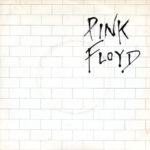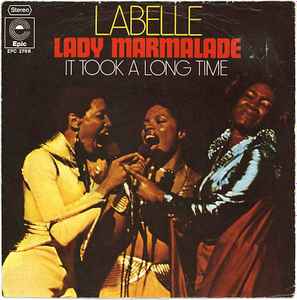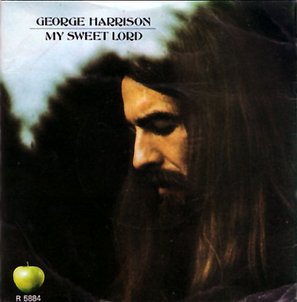 Pink Floyd’s “Another Brick in the Wall Part 2” stands as one of the most recognizable and provocative songs in rock history, a track that continues to resonate decades after its release with its defiant tone, memorable chorus, and cultural critique. Released in 1979 as part of the band’s iconic concept album The Wall, the song captures the angst, alienation, and growing rebellion of youth against oppressive authority. Pink Floyd, led by the visionary songwriting and production of Roger Waters, combined progressive rock with a daring social commentary, crafting music that was not only sonically innovative but also intellectually challenging. “Another Brick in the Wall Part 2” is particularly notable for its distinctive groove, its unforgettable children’s choir, and its incisive lyrics, which together cemented the track as both a commercial hit and a lasting cultural statement. The song’s appeal transcends generations, offering a raw, unflinching critique of institutionalized education while simultaneously delivering one of the most infectious choruses in rock music.
Pink Floyd’s “Another Brick in the Wall Part 2” stands as one of the most recognizable and provocative songs in rock history, a track that continues to resonate decades after its release with its defiant tone, memorable chorus, and cultural critique. Released in 1979 as part of the band’s iconic concept album The Wall, the song captures the angst, alienation, and growing rebellion of youth against oppressive authority. Pink Floyd, led by the visionary songwriting and production of Roger Waters, combined progressive rock with a daring social commentary, crafting music that was not only sonically innovative but also intellectually challenging. “Another Brick in the Wall Part 2” is particularly notable for its distinctive groove, its unforgettable children’s choir, and its incisive lyrics, which together cemented the track as both a commercial hit and a lasting cultural statement. The song’s appeal transcends generations, offering a raw, unflinching critique of institutionalized education while simultaneously delivering one of the most infectious choruses in rock music.
At the heart of the track lies the theme of oppression and dehumanization, articulated through the metaphor of “bricks” in a figurative wall. The lyrics convey a profound sense of alienation: children are seen as cogs in a system designed to suppress individuality and enforce conformity. Waters’ lyrics—“We don’t need no education / We don’t need no thought control”—are deceptively simple yet loaded with meaning, encapsulating a critique of rigid, authoritarian schooling and the broader societal structures that stifle creativity and personal growth. The phrasing, with its deliberate double negatives and rhythmic punch, amplifies the sense of defiance, transforming the lyrics into a chant that is both accusatory and empowering. The song captures a universal sentiment: the tension between individuality and conformity, and the struggle to resist forces that seek to diminish one’s identity.
Musically, “Another Brick in the Wall Part 2” showcases Pink Floyd’s mastery of texture, atmosphere, and dynamics. The track opens with a subdued but compelling rhythm, driven by a steady bassline and restrained percussion, which gradually builds tension and sets the stage for the entrance of the iconic guitar riff. David Gilmour’s guitar work is precise yet emotive, layering melodic clarity with a bluesy undertone that reinforces the song’s emotional weight. The interplay between the rhythm section and Gilmour’s lead lines creates a sense of both momentum and unease, perfectly complementing the lyrical theme of institutional pressure. The production, carefully layered and meticulously balanced, demonstrates Pink Floyd’s attention to sonic detail and their ability to craft music that is immersive, textured, and emotionally resonant.
A defining feature of “Another Brick in the Wall Part 2” is the use of the children’s choir, which adds both texture and a chilling irony to the song. Recorded at Islington Green School in London, the choir’s voices inject a raw innocence and emotional immediacy, reinforcing the song’s critique of education while simultaneously providing a musical hook that is unforgettable. The juxtaposition of youthful voices singing about oppression and control creates a powerful contrast, amplifying the song’s rebellious energy. The children’s voices are carefully integrated into the mix, allowing their clarity and vibrancy to coexist with the more somber instrumental elements, creating a dynamic and multi-layered listening experience that is both haunting and energizing.
The chorus of “Another Brick in the Wall Part 2” is arguably one of the most iconic in rock history. Its melody is simple yet hypnotic, designed for mass sing-alongs while maintaining its thematic punch. The repetition of “All in all it’s just another brick in the wall” drives home the metaphorical significance, reminding listeners of the cumulative effect of systemic oppression. The phrasing and timing of the chorus are carefully constructed, creating a sense of urgency and inevitability, as though each “brick” is being laid with deliberate weight and consequence. This combination of lyrical repetition and melodic accessibility ensures that the song remains lodged in the cultural consciousness, resonating with listeners who may not even be aware of the full narrative context within The Wall.
Conceptually, “Another Brick in the Wall Part 2” functions as a pivotal moment within the broader narrative of The Wall. The album chronicles the life of Pink, a character who gradually isolates himself from society, constructing a metaphorical wall to protect himself from emotional pain and societal pressures. Part 2, with its critique of authoritarian schooling, represents a critical juncture in Pink’s psychological journey, illustrating how institutional forces contribute to the creation of emotional barriers and personal alienation. The song is not merely a standalone protest anthem; it is an integral piece of a larger conceptual framework, linking individual trauma to systemic dysfunction and societal critique. Understanding the song within this context enhances its emotional and intellectual impact, revealing the layers of storytelling and social commentary embedded in Pink Floyd’s work.
The instrumentation of the track further enhances its thematic content. Nick Mason’s drumming is precise and understated, providing a steady pulse that underscores the song’s tension without overpowering the vocals or melody. Richard Wright’s keyboard textures add depth and atmosphere, creating an almost cinematic backdrop for the narrative. Gilmour’s guitar, particularly during the solo sections, conveys a sense of melancholy and longing, reflecting the frustration and alienation articulated in the lyrics. Each instrument is carefully positioned within the mix, contributing to a sonic landscape that is both expansive and emotionally evocative. The combination of these elements demonstrates Pink Floyd’s ability to merge musical sophistication with accessible, anthemic songwriting.
Beyond its musical and conceptual merits, “Another Brick in the Wall Part 2” achieved remarkable commercial success, becoming Pink Floyd’s only number-one single in the United States and earning global recognition. Its crossover appeal—melding progressive rock sensibilities with a catchy, radio-friendly hook—allowed the band to reach a wider audience without compromising their artistic vision. The song’s success highlights Pink Floyd’s capacity to balance artistic integrity with popular appeal, creating a track that is simultaneously intellectually engaging and widely accessible. Its impact on both the charts and cultural discourse underscores the enduring relevance of the themes it explores, from educational reform to personal autonomy.
The song’s accompanying music video further cemented its cultural significance, visualizing the themes of oppression, control, and rebellion in stark, memorable imagery. The video portrays children in a school setting, subjected to authoritarian discipline, juxtaposed with scenes of the band performing against a stark, symbolic backdrop. The visual narrative enhances the song’s message, providing a tangible representation of the metaphorical “wall” while amplifying the song’s emotional resonance. The imagery is both provocative and thought-provoking, contributing to the track’s status as a touchstone for discussions of institutional critique and societal commentary.
Lyrically, the song’s simplicity belies its depth. While the phrasing is straightforward, each word carries weight, and the repeated motifs of control, oppression, and rebellion resonate with listeners across cultural and generational boundaries. The song functions on multiple levels: as a personal lament, a social critique, and an anthem of resistance. This multi-dimensionality allows listeners to engage with the song in diverse ways, whether as a reflection on personal experiences, a critique of societal systems, or a celebratory expression of defiance. The ability of “Another Brick in the Wall Part 2” to operate simultaneously as entertainment and social commentary is a testament to Waters’ skill as a songwriter and Pink Floyd’s prowess as a musical ensemble.
The cultural impact of the track extends beyond music. “Another Brick in the Wall Part 2” has been referenced, parodied, and celebrated in numerous media, from films to television shows to political discourse. Its themes of resistance and critique of authoritarianism have proven timeless, allowing the song to maintain relevance even decades after its initial release. The track’s ability to articulate complex social commentary in an accessible, memorable form is a key factor in its enduring legacy, ensuring that it continues to resonate with audiences worldwide.
The song also exemplifies the power of collaboration within Pink Floyd. Waters’ lyrical vision, Gilmour’s emotive guitar work, Wright’s atmospheric keyboards, and Mason’s steady percussion coalesce into a cohesive, compelling whole. The integration of the children’s choir further demonstrates the band’s willingness to experiment and push boundaries, creating a track that is innovative both musically and conceptually. This collaborative spirit is central to Pink Floyd’s identity, allowing the band to create music that is greater than the sum of its parts, and “Another Brick in the Wall Part 2” stands as a prime example of this synergy in action.
From a musical theory perspective, the song’s harmonic structure is deceptively simple yet highly effective. The minor key tonality underscores the themes of alienation and oppression, while the steady rhythmic drive creates a sense of inevitability, reflecting the inescapable pressures faced by the song’s young protagonists. The interplay between melody and rhythm, combined with the strategic use of silence and space, enhances the track’s emotional impact, making it both memorable and affecting. Pink Floyd’s ability to manipulate musical elements in service of narrative and thematic goals demonstrates their sophistication as composers and arrangers.
“Another Brick in the Wall Part 2” is also notable for its performative energy. The song’s structure, combining verse, chorus, and instrumental interludes, allows for dynamic expression in live settings, and it became a staple of Pink Floyd’s concerts. The track’s capacity to engage audiences directly—through sing-alongs, participation, and visceral energy—enhances its impact, transforming a recorded song into a communal experience. The interaction between performers and listeners reinforces the track’s themes of resistance and collective identity, creating a shared sense of empowerment and defiance.
The legacy of the song is evident not only in its continued popularity but also in its influence on subsequent artists and genres. From alternative rock to progressive metal to contemporary pop, the principles exemplified in “Another Brick in the Wall Part 2”—innovative production, socially conscious lyrics, and the blending of accessibility with artistic ambition—have inspired countless musicians. Its ability to balance message and melody, intellectual engagement and mass appeal, serves as a model for artists seeking to create work that is both meaningful and enduring.
Ultimately, Pink Floyd’s “Another Brick in the Wall Part 2” is a masterful convergence of musical innovation, social commentary, and cultural resonance. Its infectious groove, memorable chorus, and incisive lyrics combine to create a track that is both immediately engaging and deeply meaningful. The song’s critique of authoritarian education, its exploration of alienation, and its celebration of rebellion continue to resonate with listeners, demonstrating the enduring power of music to reflect and shape human experience.
The brilliance of the track lies in its totality: the collaboration of talented musicians, the thoughtful integration of lyrics and instrumentation, and the capacity to engage audiences on multiple levels. It is a song that challenges, entertains, and inspires, capturing the complexity of human emotion while delivering a clear and memorable message. “Another Brick in the Wall Part 2” is a reminder of the enduring relevance of music as both art and social commentary, a track that remains as vital today as it was upon its release, continuing to assert that the groove, the rebellion, and the critique are forever cemented in the wall of cultural consciousness.
Roger Waters’ vision, combined with the musical prowess of Gilmour, Wright, and Mason, and enhanced by the haunting innocence of the children’s choir, ensures that “Another Brick in the Wall Part 2” remains one of Pink Floyd’s most iconic and enduring works. Its ability to fuse message and melody, critique and catchiness, seriousness and accessibility, demonstrates the band’s mastery of their craft. The song’s place in the pantheon of rock music is secure, not merely for its commercial success, but for its enduring capacity to engage, provoke, and inspire.
Ultimately, “Another Brick in the Wall Part 2” is a testament to the power of music as a medium for expression, reflection, and rebellion. Its infectious energy, memorable chorus, and profound social commentary continue to resonate across generations, ensuring that the track will remain a cornerstone of rock history, a symbol of resistance, and an enduring call to question authority while celebrating the power of individuality and collective voice. Pink Floyd’s masterpiece proves that even decades later, the message and the music are not only relevant but essential, reminding listeners everywhere that each brick in the wall matters, and that challenging the wall is a timeless, universal act.


